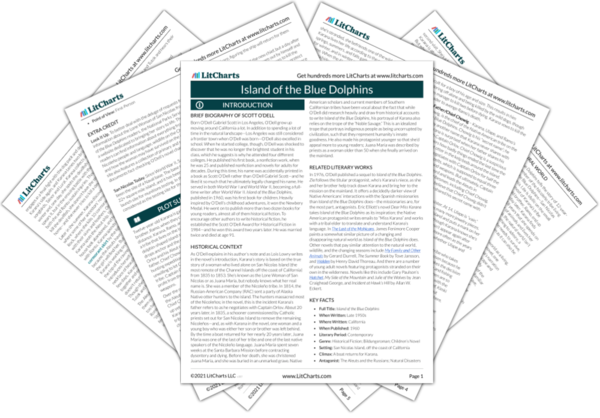As she tracks the leader across the island, Karana demonstrates her ability to keep track of animals on the island—an important skill, especially now that she’s living alone. The leader’s refusal to fight back or show aggression of any sort makes the thought of killing him seem way less satisfying. Killing him seemed like a great outcome when he and Karana were locked in a battle of wills and wits, but now, the dog has clearly given up.
